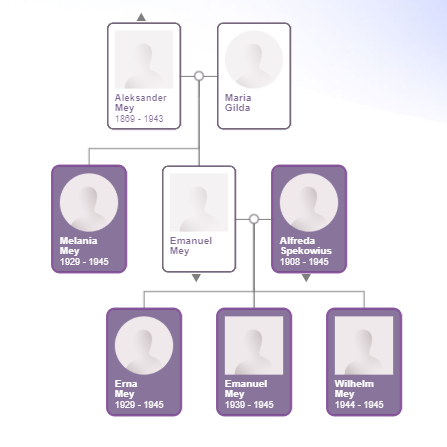
Tracing my maiden name, May, has led me on a fascinating journey of discovery. Growing up, I was always told that our family was of German descent. However, my research revealed a more complex heritage: my ancestors had lived in Poland since at least 1780, specifically in the small town of Bieżuń, located in the Masovian Voivodeship. This region has a turbulent history, having shifted between Prussian, German, and Russian control over the centuries.
Bieżuń’s story during the 20th century is particularly harrowing. The town fell under German occupation in September 1939, following the joint German-Soviet invasion that marked the beginning of World War II. The occupation lasted until 1945 and was characterized by harsh German policies. In 1942, approximately 100 Polish residents were expelled from Bieżuń. These individuals were first detained in a camp at Działdowo before being deported to the Kraków District in German-occupied southern Poland. Their homes were then given to German settlers as part of the Nazi Lebensraum policy.
Liberation finally came to Bieżuń in January 1945, during the massive Vistula-Oder Offensive launched by the Red Army on January 12. This operation, one of the largest in military history, involved over 2.2 million Soviet soldiers and around 5,000 aircraft. The offensive pushed Soviet forces 480 kilometers (about 300 miles) from the Vistula to the Oder River in just over two weeks, sweeping through central Poland and freeing towns like Bieżuń from German occupation. Although the exact date of Bieżuń’s liberation isn’t widely documented, it occurred during this period, ending more than five years of brutal Nazi rule. Like many other Polish communities, Bieżuń suffered greatly under occupation, with attempts to eradicate Polish culture and exploit the population for forced labor.
During my research into Bieżuń, I discovered a Polish document titled “Słownik Strat Osobowych Gminy Bieżuń w Latach 1939-1947” (“Dictionary of Casualties in the Municipality of Bieżuń in the Years 1939-1947 – The Fallen, Murdered, Killed and Missing”), published in 1993. Compiled by Stanisław Ilski, Marian Przedpełski, Jadwiga Siedlecka, and Stefan Zaleski, this booklet lists the names, ages, family members, and religious affiliations of those lost during this dark period. Among its pages, I found five entries for members of my extended family (see tree above). Each was noted as Lutheran and, heartbreakingly, each was recorded as having been murdered after the Soviets took control. However, evidence suggests that it was likely the Germans who were responsible for these deaths.
These individuals and their suffering must never be forgotten. I can only imagine the hardships they endured. I feel incredibly fortunate to have found this small but invaluable record, ensuring that their memories live on.
If you have found this information useful, please consider supporting my work by subscribing to my blog and podcast today. Thank you!




My SIL works for the Defense POW/MIA Accounting Agency, repatriating American soldiers who were killed during WWII. I've heard him mention Bieżuń. If it weren't for verbal family history, so many would never know their real roots of the people who were so displaced by both the Germans and the Russians. I'm glad you've been able to reclaim your roots.
Great research! Such horrors to unearth. I understand the feeling and desire to honor their memories. My family was from Kopytowa which was part of Austria when my grandfather was born, then Poland after the war. Part of my family still live there and it's destitute. My cousins and I send them funds and supplies through Dom Polski. I am infatuated with the Hussar Winged Warriors from Poland and their history. I honor my Polish roots, especially my grandfather, with a tattoo of the Hussar and a coal miner lamp. He was my "warrior" facing such hardships working in the coal mine and dying of black lung to bring our family to America.
Thanks for sharing your family's stories.